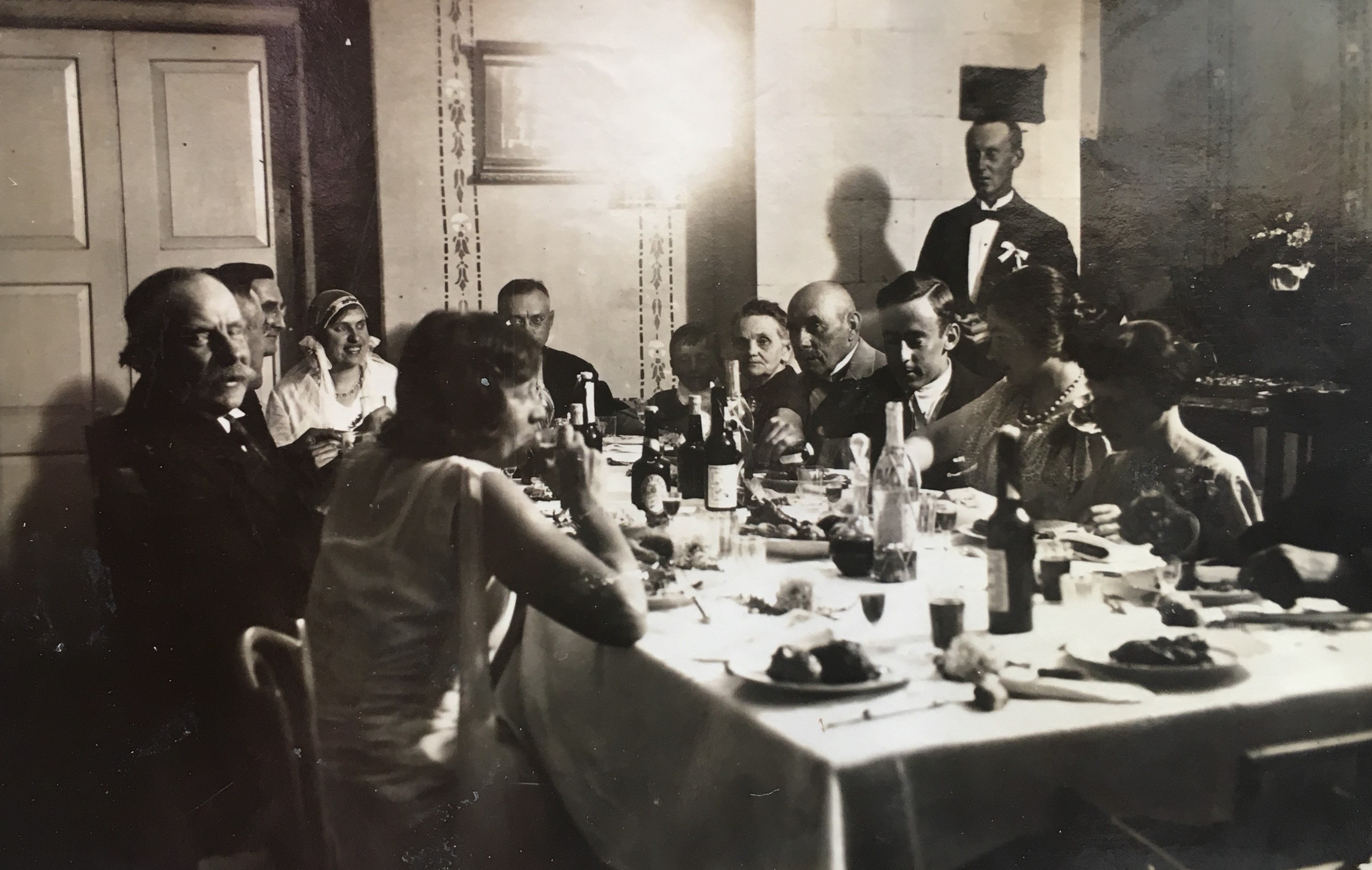 The name “Lipliūnai” or “Montvilai” has been found in historical sources since the 18th century. In 1822 it was mentioned the Lipliūnai estate with the manor house belonging to the nobleman A. Montvilas. In 1869, the Lipliūnai or Montvilai manor was inherited by Alina Žebrauskienė and her daughters Adelė and Marija. 1894 Lipliūnai manor passed to one of her daughters - Marija Žebrauskaitė Zberškauskienė, whose husband Levas Zberškauskas worked as a justice of the peace in Tallinn. The family used to live in Tallinn, the only daughter and heiress of Lipliūnai manor Alina Marija Zberškauskaitė graduated from pharmacy studies in Estonia and returned to Lithuania to work as a pharmacist in Kėdainiai. Alina Zberškauskaitė married Lithuanian officer Česlovas Christauskas in 1921. The family of Alina and Česlovas Christauskas lived with their only son Steponas (b. 1924) in Lipliūnai manor until the deportation and confiscation of property on June 14, 1941. Česlovas Christauskas was the captain of the Lithuanian Armed Forces, described in the encyclopedic publication "Officers of the Lithuanian Armed Forces 2018 - 1953". After the restoration of Lithuania's independence, the descendants regained the incomplete manor, part of which was sold to the current owner in 2019.
The name “Lipliūnai” or “Montvilai” has been found in historical sources since the 18th century. In 1822 it was mentioned the Lipliūnai estate with the manor house belonging to the nobleman A. Montvilas. In 1869, the Lipliūnai or Montvilai manor was inherited by Alina Žebrauskienė and her daughters Adelė and Marija. 1894 Lipliūnai manor passed to one of her daughters - Marija Žebrauskaitė Zberškauskienė, whose husband Levas Zberškauskas worked as a justice of the peace in Tallinn. The family used to live in Tallinn, the only daughter and heiress of Lipliūnai manor Alina Marija Zberškauskaitė graduated from pharmacy studies in Estonia and returned to Lithuania to work as a pharmacist in Kėdainiai. Alina Zberškauskaitė married Lithuanian officer Česlovas Christauskas in 1921. The family of Alina and Česlovas Christauskas lived with their only son Steponas (b. 1924) in Lipliūnai manor until the deportation and confiscation of property on June 14, 1941. Česlovas Christauskas was the captain of the Lithuanian Armed Forces, described in the encyclopedic publication "Officers of the Lithuanian Armed Forces 2018 - 1953". After the restoration of Lithuania's independence, the descendants regained the incomplete manor, part of which was sold to the current owner in 2019.Since the second half of 19th century Lipliūnai estate was ruled by tenant. In 1892 there were 10 buildings in Lipliūnai manor, the main manor house was made of bricks and covered with shingles. During the tsar's period, Lipliūnai manor was valued very well - the buildings were excellent, the harvest was abundant, the geographical location was convenient, and land reclamation was carried out. In 1925 were registered 17 buildings in Lipliūnai estate. During the Soviet occupation, Lipliūnai manor was nationalized and used for various purposes: for housing in the beginning, in 1957/58 - as an experimental unit of Lithuanian Institute of Hydraulic Engineering and Land Reclamation, and since 1966 in the main manor house was established Lipliūnai secondary school for the adaptation of which the authentic structure and interior details of the manor house were destroyed.
Currently, two manor buildings have survived in the estate - the palace and the tenant's house. Lipliūnai manor palace house was built according to stylistic features of the beginning of 19th century. It is a rectangular building with Doric vestibule columns and a stepped cornice as well as ornate balcony. The house of the tenant (or caretaker) has features of the beginning of the 20th century characteristic for the architectural style of red bricks - relief decoration of masonry. There are the beginnings of the park in the territory - some old trees, a pond, the location of the former stream, fragments of alleys, the former large garden have not survived. However, the estate is abandoned, the buildings are not used or heated, the condition is poor, urgent repairs are needed to preserve the manor fragments and structure. Maintenance projects are currently being prepared. The manor is located near the town of Kėdainiai, in a convenient location, the manor buildings and territory are intended to be used for the needs of the local community, establishing a cultural and educational center, while perpetuating the historical heritage.